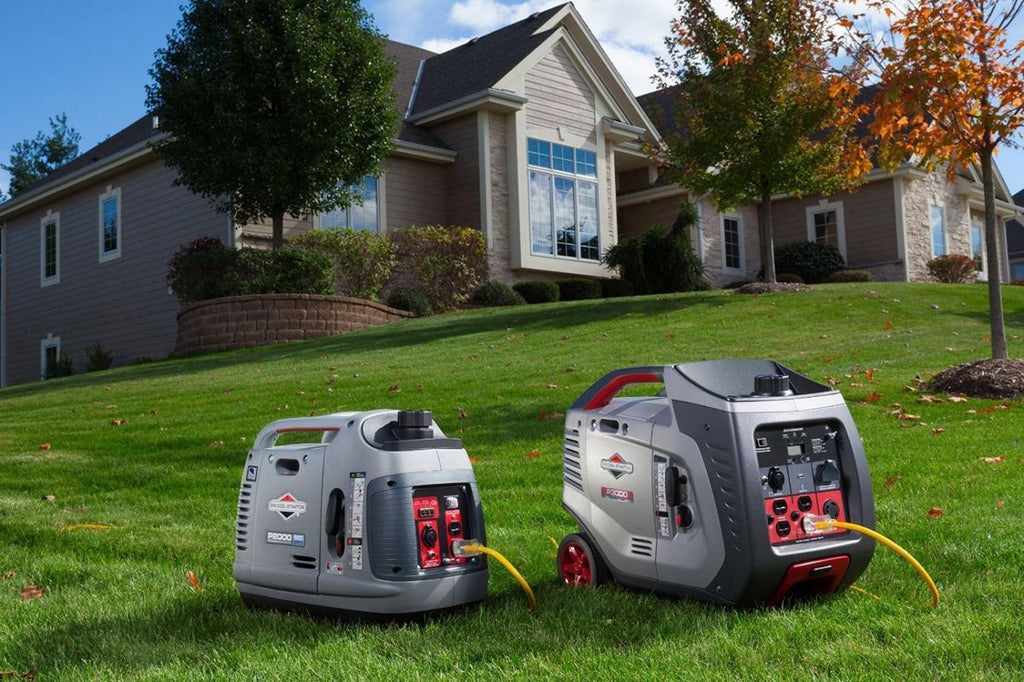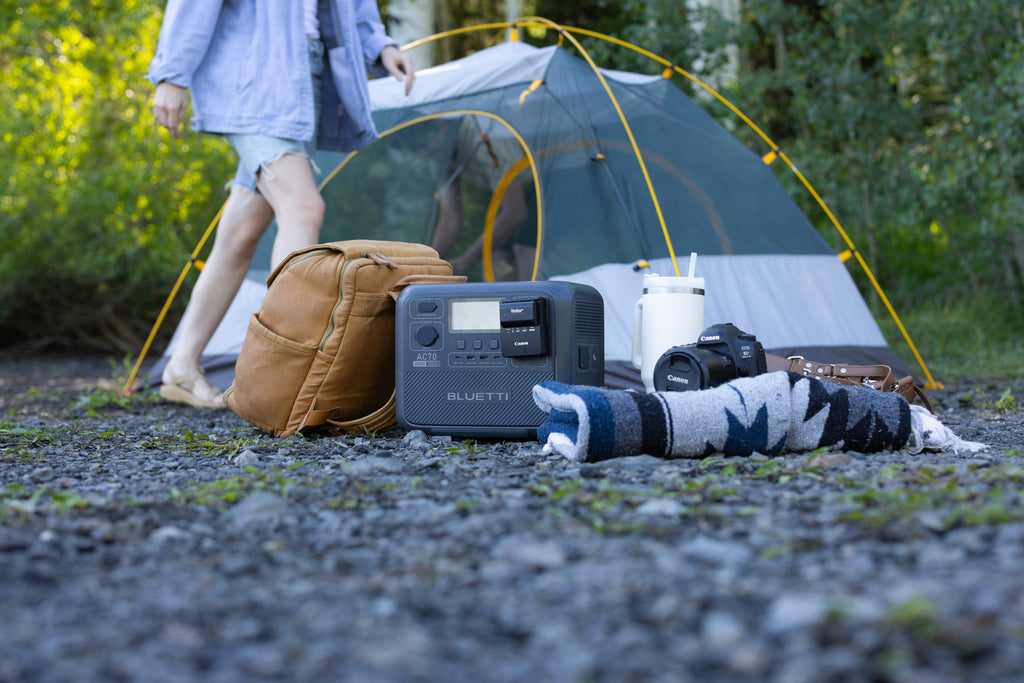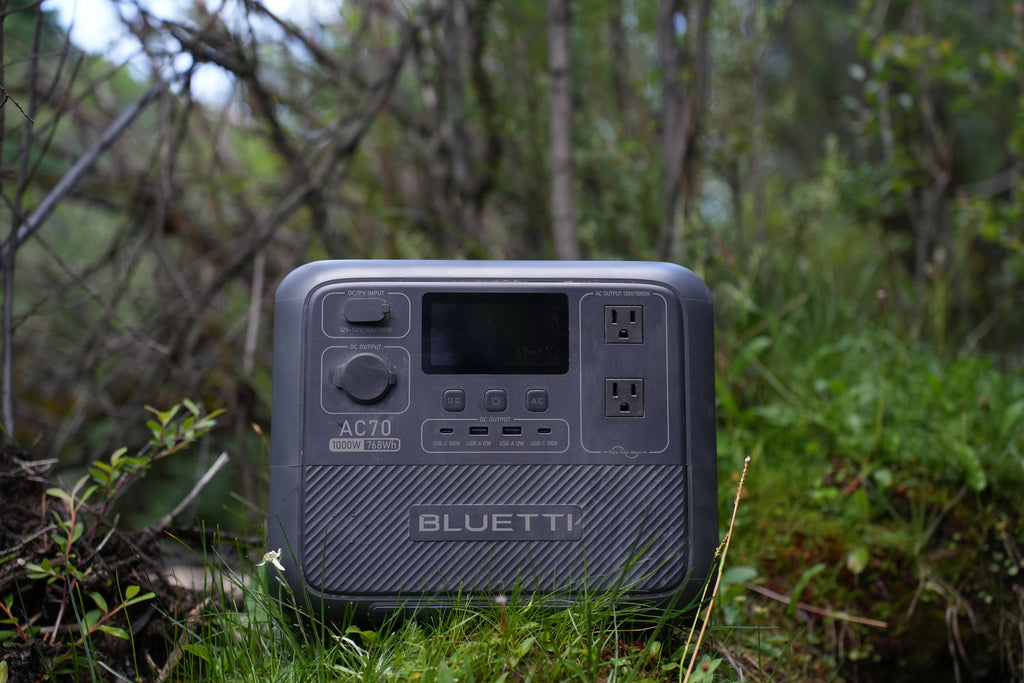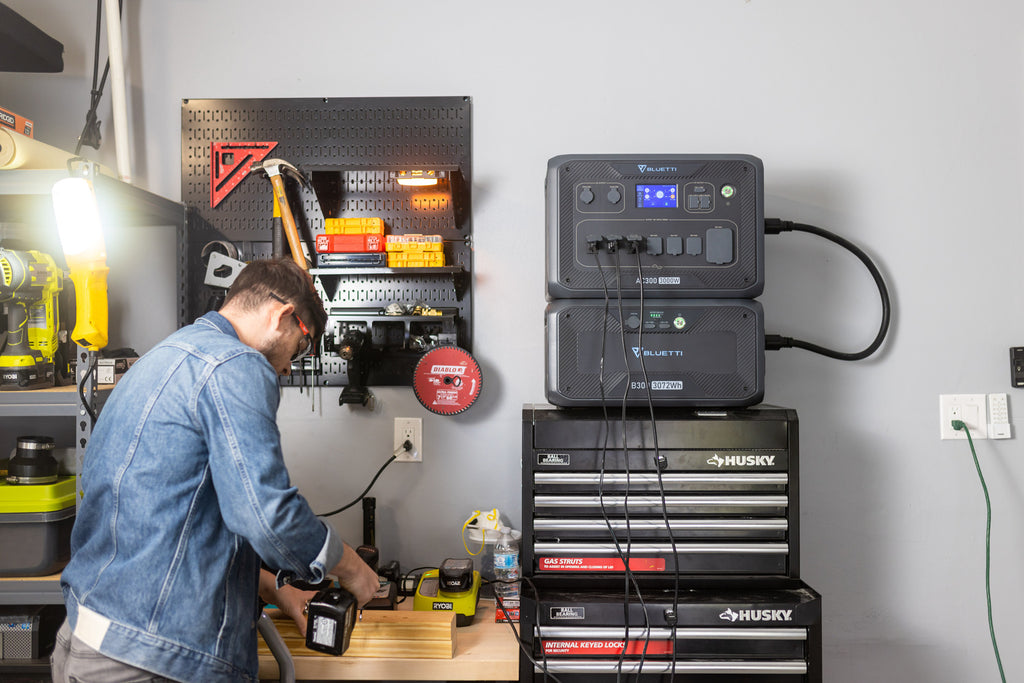The need for a reliable power source is inevitable in today’s tech-reliant world. With the ever-evolving landscape of portable power solutions, it's pretty confusing which aligns best with someone's personal needs.
Two popular options on the horizon are inverter generators and portable power stations. The generators have served the purpose for a long time and have also witnessed recent technological integrations. On the other hand, portable power stations are more handy, efficient, and environmentally friendly.
So, is a portable power station better than an inverter? Let’s compare both and find the answer!
What Is a Portable Power Station?
Portable power stations, aka PPS, are rechargeable energy storage units that store power in their batteries and provide it when needed. Their battery size could be small to large and also extendable to many thousands of watts, depending on their type and model.
The charging capacity of portable power stations ranges from small gadgets like mobile phones and laptops to heavy-duty appliances, including ovens and ACs.
What sets them apart from other power storage devices is their sleek designs and easy portability. They are integrated with various output ports, including USB ports, AC outlets, and DC outlets. This makes them compatible with more or less all electrical devices.
How Does Portable Power Stations Work?

The working of a portable power station is the same as that of a backup generator. However, they don’t generate electricity. Instead, store the power provided from other sources. Additionally, unlike conventional generators, they are small and convenient to use.
They get AC current from power sources like solar, grid, car battery, or any other, depending on their charging type. This power is stored in batteries and, when needed, converted to DC current or supplied directly as AC current, depending on the nature of the device they are powering.
With portable power stations, there is no need for inverters. They work on the principle of plug and play. You just have to switch on the station, plug in the appliance switch, and they will start providing power.
Depending on their size and output versatility, BLUETTI offers various types of portable power stations. Each product has its specific features, and you can choose according to your needs and requirements.
Pros and Cons of Portable Power Stations
Portable power stations are gaining immense popularity across the globe. With a lot of benefits they offer, there are also some disadvantages associated with them.
Below is a detailed discussion about the pros and cons of portable power stations so you can get an exact idea about what you are getting on the table with these units.
Pros of portable power stations
- Size: What truly sets portable power stations apart is their compact size. They are lightweight and mostly come with wheels, which makes their movement easy, and thus are suitable for off-grid camping, tours, parties, etc.
- Rechargability: Next comes their rechargeability. Most PPSs have multiple recharging streams, including solar, DC, and AC+solar. This makes it quite convenient to recharge the unit whenever, wherever you want. Additionally, they have a LiFePO4 battery type, which is the most efficient and eco-friendly type of battery.
- Quite: The noise was a big issue with conventional generators, but PPSs are best at this. They are completely quiet and do not produce any sound.
- Safety: Last on the list is the safety. PPSs use stored energy and thus do not emit any type of fumes and are highly safe and compatible for both indoor and outdoor use.
Cons of portable power stations
- No energy generation: PPSs are only energy storage devices and do not produce any energy by themselves, like inverters or generators. However, they can be easily converted to solar generators by simply attaching solar panels to them.
- Cost: Cost is another point of consideration. PPS comes with a higher price tag. However, as compared to inverters, the price is almost the same for both.
What is an Inverter Generator?

Inverter generators are modern versions of conventional generators designed to supply stable and eco-friendly power to sensitive electronics. They are compact and integrated with advanced technology.
What differentiates between inverter generators and conventional generators is that they are less fuel-consuming and are quieter.
Depending on their fuel, there are multiple types of generators available in the market, each with a specific set of advantages. Gasoline-based is more portable than natural gas, which offers an extended power supply, and diesel-fueled is considered best to stand in rough and tough conditions.
How Does Inverter Generators Work?
The working principle of conventional generators and inverter generators are same, except the inverter technology of inverter generators outputs balanced power to ensure the smooth running of the appliance.
The power in inverter generators is produced as AC current and converted to DC current, which is again converted to AC current and forwarded to a computer-based control panel. This control panel supplies power to devices with a lower THD than conventional generators.
THD (Total harmonic distortion) is the voltage spike, that if not balanced properly can damage the sensitive electronics. In inverter generators, the power is cleaned with less than 6% THD before it is supplied to devices.
Pros and Cons of Inverter Generators
Inverter generators are highly reliable for powering sensitive electronics. With the multiple advantages they offer, they also have some disadvantages. Here is a comprehensive discussion about their pros and cons.
Pros of inverter generators
- Better Fuel efficiency: With skyrocketing fuel prices, the fuel consumption of a generator is the top concern. Unlike traditional generators, inverter generators only produce the power required by the plugged-in device, which makes them highly fuel efficient. This ultimately leads to longer run times, saving costly fuel prices.
- Reduced noise pollution: Inverter generators have effectively addressed the noise pollution issue of regular generators. The sound produced by inverter generators ranges between 50-60DBA, which is of the same volume as normal conversation. This makes these units highly compatible in areas sensitive to noise pollution.
- Clean energy: Inverter generators are integrated with digital technology. They produce clean energy without any voltage and frequency spikes. This ensures the steady performance of sensitive electronic devices.
Cons of inverter generators
- High upfront costs: The manufacturing of inverter generators requires complex engineering and technology. This levels up the price of these units ranging between 500-2000$. However, if review the case in the long term, the fuel cost savings pay back the initial costs with time.
- Only Outdoor use: Despite the fact that inverter generators are high-tech products, they still consume fuel and release toxic fumes that are not suitable for the environment.
- Reliability of fuel: Inverter generators require a continuous supply of fuel to keep functioning. Though some recent units also support solar energy, they mostly use conventional fuels to carry out operations. This regular refueling could be tedious, where long-term use is required.
Portable Power Stations vs. Inverter: What Are the Key Differences?

Both portable power stations and inverter generators are marvels of technology. However, there are some key differences that differentiate between them.
Power production
Inverter generators use conventional fuels like propane, diesel, and natural gas to produce the required amount of energy. Contrarily, portable power stations get their power from traditional grids and solar panels to charge themselves first and then run the devices.
Power Capacity
Talking about output capacity, both the inverter generators and portable power stations have the same power capacity, typically ranging between 500-3000W. However, with PPS, this capacity can be boosted by joining external batteries depending on the type and model of the station.
Convenience of Use
Inverter generators, due to their toxic fumes, are only suitable in the outdoors. Using them indoors could have several health hazards. On the other hand, portable power stations are safe and reliable to use both indoors and outdoors.
Refuelling methods
Inverter generators require periodic refueling with gas, and portable power stations need time to recharge, which can extend between 1 and 5 hours depending on capacity and the PPS model.
Related articles: Conventional Vs Inverter Generator - Which Is Best for Home Use?
What Is A Solar Inverter, and How Does It Work?
Is a Portable Power Station Better Than an Inverter?
When off the grid, inverter generators and portable power stations can effortlessly provide energy to keep your device running.
However, if we compare both, the safety aspect of portable power stations is more viable. They do not need any refueling with dangerous fuels like propane and natural gas. Plus, while used, they do not emit any toxic fumes.
Additionally, while the PPSs can be charged through solar energy, the regular high fuel cost of inverter generators could be a burden on your pocket.
Top recommendations for Inverter generators and portable power station
Choosing between an inverter or PPS could be your personal decision, depending on your preferences. Here, we have the 2 top tier products from BLUETTI in both domains to help you select what suits you the best.
BLUETTI AC70 Portable Power Station

With 2000W power and 768Wh output capacity, BLUETTI AC70 is the most optimal unit you will find in the market. The station has 950W turbocharging, which means it will take the battery only 45 min to reach from 0-80%.
Additionally, this product has a LiFePO4 battery with 3000+ cycles. To put this simply, the unit has a shelf life of plus than 7 years with one charge cycle every day, and it ensures that everything you are using is environment-friendly. To support all your electric devices, this portable power station comes with 7 different ports and can be monitored through the BLUETTI smart app.
With all this on the table, if you are opting for a portable power station, this product is a must-have.
BLUETTI AC300 Inverter Module Generator

If you need an inverter generator, we have AC300 for you here. With its 3000W power and surge capacity of 6000W, it can take care of all your devices, from mobile phones to refrigerators and portable ACs.
It also allows the expansion of power up to 12288 Wh with external batteries. Ensuring all your devices are running smoothly. The product offers 5 versatile charging ways and multiple output ports to support all your appliances.
What sets AC300 apart is its price match guarantee. This means if you find any product with a lower price than this, you can claim the difference within 30 days of purchase.
Final Thoughts
The choice between an inverter or a portable power station is quite a difficult decision. Both effectively provide power in case of a blackout or when you are off the grid.
Factors that differentiate between them are their working mechanism, response towards the environment, refueling, power capacity, and safety.
Ultimately, while opting for any of them, it is recommended to review your personal needs and choose what aligns best with them.






































































